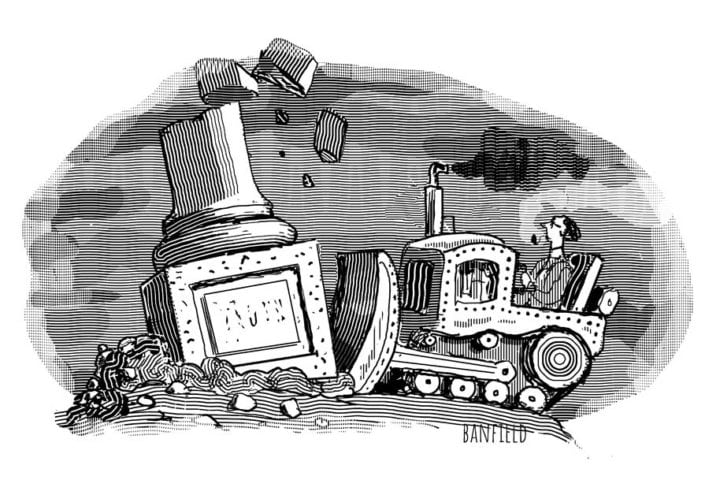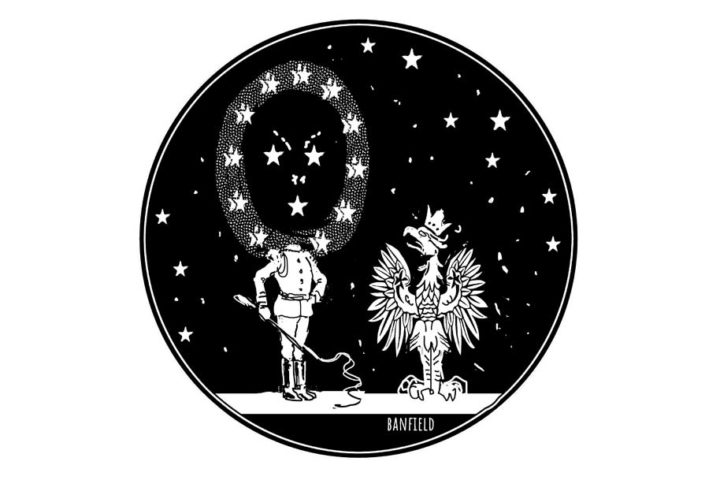Book Reviewed
William F. Buckley, Jr., said that he would rather be governed by the first 2,000 names in the Boston telephone directory than by the 2,000 members of the Harvard faculty. Batya Ungar-Sargon is as dubious about eminent journalists as Buckley was about eminent professors. In Bad News: How Woke Media is Undermining Democracy, she concludes that the problem lies with journalists’ attempts to ignore and discredit the vox populi. Journalism has become an alien concept and only occasionally do writers get caught in a random act of reporting.
The deputy opinion editor of Newsweek, Ungar-Sargon notes that journalists did not used to be members of an elite. In fact, “journalism was a high working-class job, more a blue-collar trade than a profession.” Despite starring Cary Grant as a newspaper editor, the 1940 Howard Hawks film His Girl Friday portrays journalism as fierce and frenzied, rather than cool in either sense of the term.
But with the “rise of John F. Kennedy” and cultural impact of Jacqueline Bouvier Kennedy, both of whom had dabbled in journalism, the industry began to change. By the time the movie All the President’s Men was released in 1976, every journalist was striving to be Robert Redford and Dustin Hoffman, and the profession itself appeared to be noble and glamorous. In Hollywood’s perverse version of the American Dream, journalists saw their own dreams of status and importance.
The rise of television transformed people’s consumption of the news. Watching the local and network evening news shows became the way most Americans found out about what was going on in the world. The afternoon newspaper was only the first casualty. With the advent of the internet, newspaper readership has declined steadily since the 1980s. Even though journalism has become a more precarious career as a result, the industry’s ambitions have grown. The primary job is no longer reporting but interpreting: not telling readers or viewers what happened, but directing them to understand what it means, and what attitudes to have toward big events and figures.
* * *
In other words, journalists decide who and what is good and bad, and why readers should accept this. Although she doesn’t dwell on Karl Marx’s ideological doctrines from a philosophical standpoint, Ungar-Sargon nevertheless frames the discussion in Marxist terms. Most journalists are liberal, and people who read newspapers (now online, mostly, rather than on the page) are middle- and upper-class liberals.
The reason is simple: the working class relies mostly on television and radio for the news because they work long shifts at jobs that afford few opportunities for web browsing. What was true of the New Yorker in the 1920s—that it was neither “edited for the old lady in Dubuque” nor “concerned in what she is thinking about”—is true of the national media generally a century later. Even Woody Allen made fun of such snobbery in his 1977 masterpiece, Annie Hall, which showed that the East Coast’s fickle elites wanted to appear compassionate but neither comprehended nor cared that real people were leading real and often difficult lives.
According to Ungar-Sargon, the purpose served by this condescension is to both “stoke and allay the class anxieties” of careerists afflicted with intellectual arrogance, rendered acute by the lack of intellectual attainment. People divide along several axes, of course, class being one of them. They do so because as human beings, we seek the group that most resembles who we are, sharing similar attitudes, concerns, and premises.
Oblivious to their own group-think, however, journalists are gratified to believe and amplify stories showing deplorables clinging to their guns and religion. Consider the Jussie Smollett fiasco. The idea of white supremacist bands roving Chicago’s freezing downtown after midnight in January in order to shout “This is MAGA country” while assaulting a black, gay, C-list television actor is so galactically stupid that only graduates of our finest journalism schools could believe it.
* * *
But it isn’t just the leftist media that doesn’t care about the working class. Ungar-Sargon rightly claims that the conservative media doesn’t “have an accurate picture of who the working class is.” Although a media giant like “Fox News doesn’t sneer at working-class values,” it also doesn’t have a policy agenda for addressing the working-class insecurity. A political coalition does not live by cultural resentment alone.
Bad News’s strengths are extensive research and its author’s accessible prose style. Ungar-Sargon persuasively demonstrates that the media fabricate with facility and manipulate reality in order to perpetuate an “us-versus-them” frame for every story. There is no such thing as intellectual integrity in propaganda, and “the forgotten ones” will continue to be America’s working class, the people most likely to believe that Donald Trump took them and their concerns seriously. As he said at many rallies, “They’re after you. I’m just in the way.”




